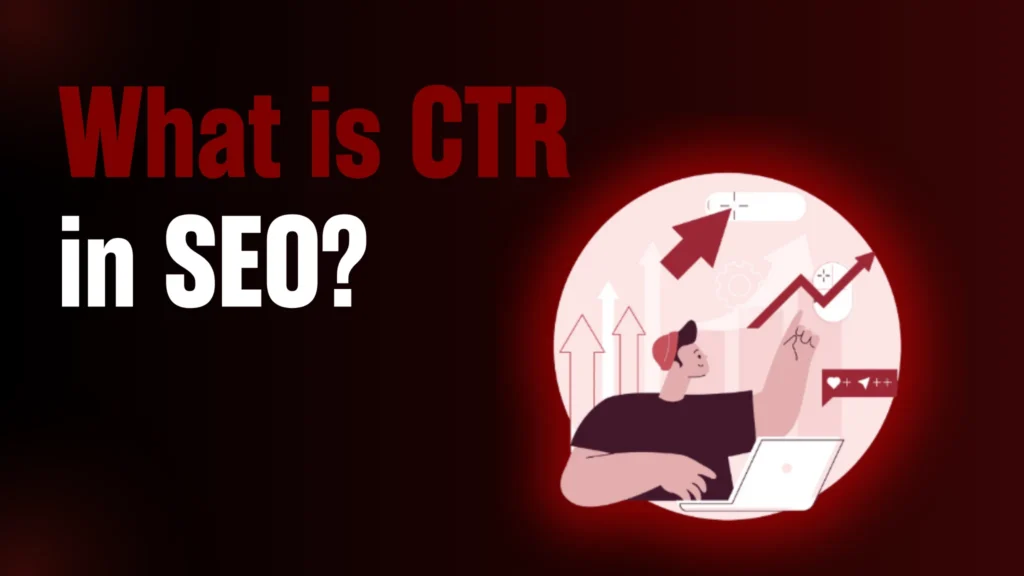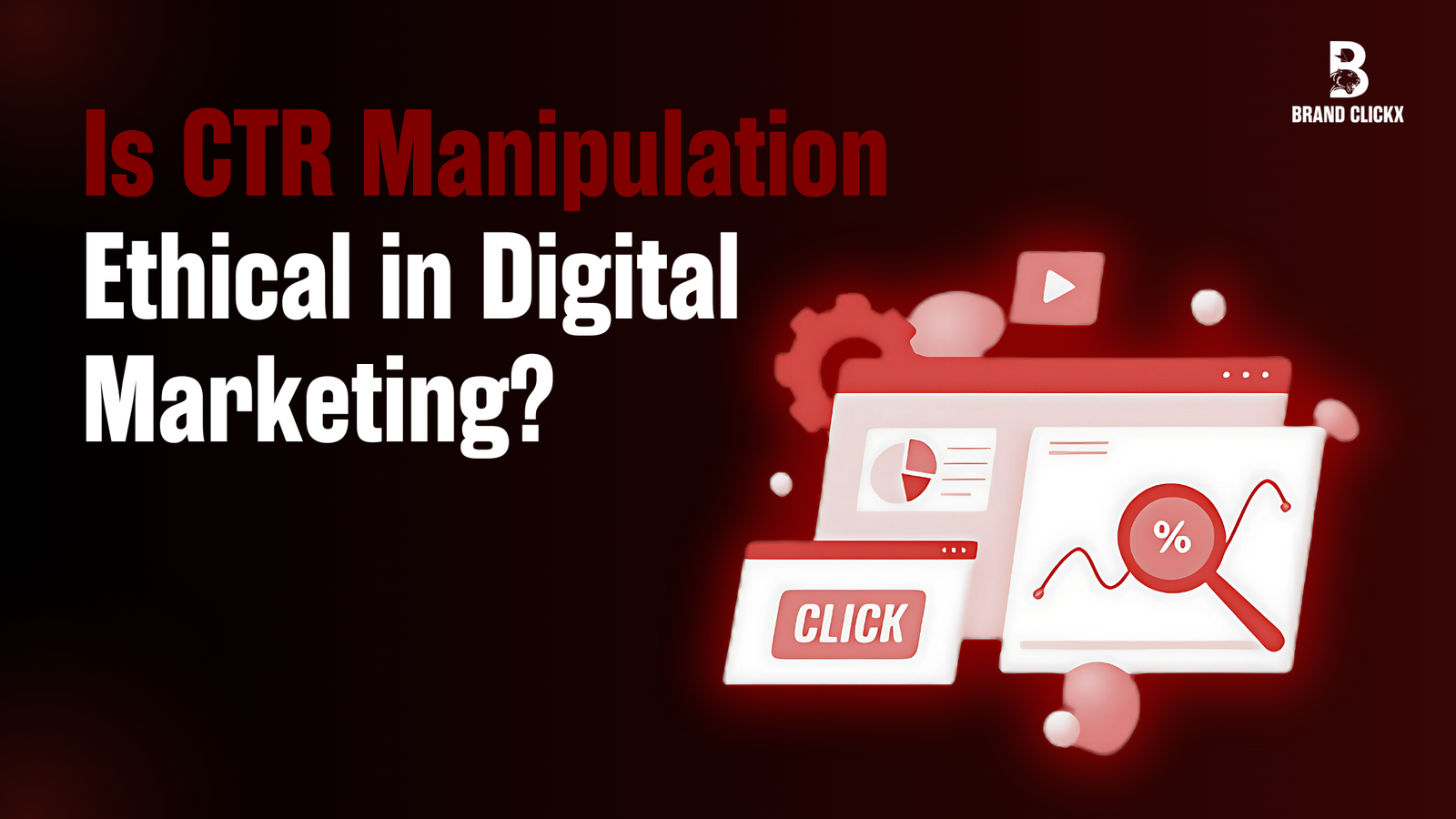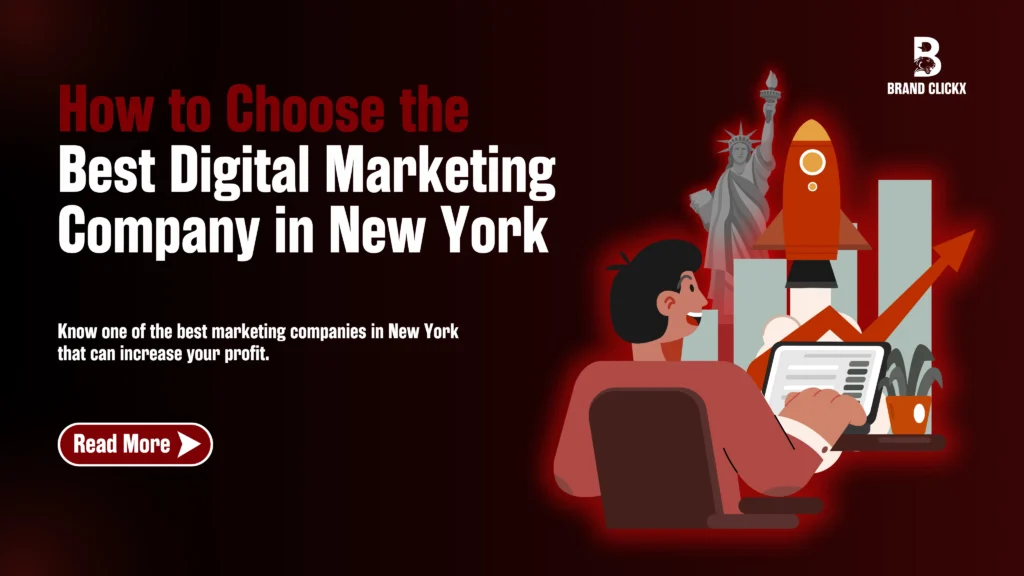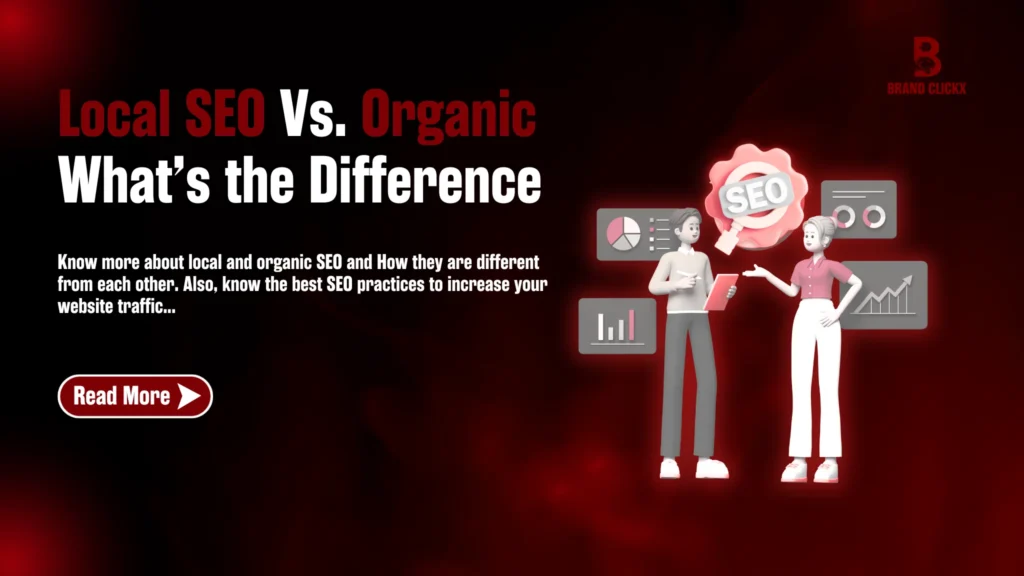Have you ever been worried about why your digital marketing campaigns are not producing the desired outcomes? That’s so frustrating, isn’t it? If you write excellent content, create great ads, and use superb SEO, your website shouldn’t be lost at the bottom of the search results. It’s hard for brands to stand out in today’s oversaturated digital space.
Improving your CTR becomes one of those make-or-break missions where: clicks = visibility and visibility = business. Things get tricky (and maybe a little fishy) here. Some people use click-through rate manipulation as a quick pass to success. But this raises a crucial question: Is it ethical?
Let’s read further to know the answer!
What is CTR in SEO?

Click-through rate is used in most digital marketing channels like paid search, email campaigns, and organic. Measure the frequency with which users click through to your site from search, ad, or email links for the number of impressions (views) that link has.
There are two types of CTR:
Organic CTR has to do with an impression generated when a link appears in the search engine results page (SERP) in relevance to a user’s search query.
Paid CTR is how you receive traffic because of a paid advertisement. For example, if a user lands on your site after:
- Clicking on a Google text ad, or Google Shopping ad.
- Clicking on a display ad on a website or a social media site like Facebook
How to calculate CTR?
Click-through rate (CTR) measures how often users click your listings on Search Engine Results Pages (SERPs). It is the ratio of clicks to impressions. Keyword rankings are key to SEO. But, CTR shows how well your listings attract clicks. CTR is calculated as the total number of clicks made on the link over the number of times the link shows up (or impressions).
A percentage number is then obtained by multiplying the result by 100.
CTR is calculated using the formula:
CTR (%) = (Number of Clicks ÷ Number of Impressions) × 100
Example:
If a search result appears 100 times (impressions) in SERPs and gets 10 clicks, the CTR is: (10 ÷ 100) × 100 = 10%
What is a Good CTR for SEO?
The SEO Click-Through Rate (CTR) average varies based on industry, search query type, and where you are on the Search results page. That being said, there is no one-size-fits-all answer, and here are some benchmarks and considerations for what defines a good CTR.
CTR Benchmarks by Industries
Data has been taken from Cxl’s What is a “Good” Click-Through Rate? Click-Through Rate Benchmarks
| Industries | Average CTR (Search) | Average CTR |
| Travel | 9.19% | 0.47% |
| Sports & Recreations | 8.82% | 0.51% |
| E-commerce | 5.50% | 0.51% |
| Restaurants & Food | 7.60% | 0.47% |
| Real Estate | 8.55% | 1.08% |
| Industrial & Commercial | 5.61% | 0.46% |
| Home & Home Improvement | 4.62% | 0.49% |
| Health & Fitness | 6.15% | 0.59% |
| Finance & Insurance | 5.70% | 0.52% |
| Education & Instruction | 6.17% | 0.53% |
| Career & Employment | 5.93% | 0.59% |
| B2B | 5.17% | 0.46% |
| Beauty & Personal Care | 5.92% | 0.72% |
| Automotive | 5.65% | 0.60% |
| Attorneys & Legal Services | 4.24% | 0.59% |
| Arts & Entertainment | 11.43% | 0.51% |
How Can Businesses Succeed Without CTR Manipulation?
Businesses can succeed without CTR manipulation. They should focus on ethical, sustainable practices that truly attract users. Below, we will discuss a few essential factors that contribute to the success of a website:
1. The industry:
A good CTR benchmark depends on the industry your marketing is in. To know what qualifies as a reasonable average CTR for you and your business, you must research the industry average CTR. Then, once you have that number, you’ll find out what works for each type of link you will use.
2. The keyword:
For example, your target CTR is 3-6%. Some keywords may affect it. You should have a strategy for your site’s target CTR. A high CTR can be good if you want customers to visit your site from a keyword or phrase you created. But, if your keyword isn’t converting, a high CTR is bad. It means people aren’t buying what you’re selling. A high CTR may hurt your business in a pay-per-click (PPC) advertising campaign if you pay for those keywords.
3. The Position of the link:
The ad position factors into a good CTR in the case of a display ad, as well as where the link (within the ad content) appears. For that reason, of course, when trying to find a quality score for your CTR, you must consider the place of the link and the rest.
4. The type of link:
The type of link also plays a role in having a good click-through rate. These ad campaigns (PPC, email, Google Ads, display, social network ads, etc.) use CTR as a metric.
What is Click Through Rate Manipulation?

Click-through Rate can be manipulated to increase the number of clicks on a web page, ad, or search result, given that it’s been seen Click-through Rate can be manipulated to increase the number of clicks on a web page, ad, or search result, given that it’s been seen (impressions). Simply put, make your content irresistible so they cannot help but click on it. Here’s how it works: Online marketing and SEO both have an important metric, which is Click-through Rate (CTR). Instead of relying solely on organic clicks (people genuinely interested in the content), some might use tactics like:
- Creating clickbait headlines that make people curious enough to click
2. Using bots or hiring click farms to generate artificial clicks on a specific link.
3. Engaging users through incentives (e.g., “Click here to win a prize!”).
CTR boosting can be a legitimate way if done truthfully. It can improve content quality or reach a niche. But, using deceitful means is risky. Search engines can notice fake clicks and low-brow tactics, which can cost you penalties or lead to trust loss.CTR manipulation means, in a nutshell, changing the number of clicks on your content by low and high means.
Signs of Click-Through Rate Manipulation
Signs can vary depending on the method used, but here are some common indicators to look out for:
1. Sudden Spike in Click Through Rate
A sudden, big rise in CTR may be manipulative. This is the case if the content is unchanged, the wrong people are targeted, and there are no improvements in ad targeting or marketing. Let’s say your average CTR is 3% and it suddenly shoots up to 15% overnight; it’s something natural to question.
2. Irregular Traffic Patterns
Book traffic is coming from out-of-the-ordinary areas. The amount of traffic from IP addresses known for click farms may indicate high volumes of bot activity.
3. Short Session Duration
Short-time sessions on the page may indicate users are clicking links but are not staying long enough to read into the content, i.e., the clicks aren’t genuine. Typically, real users spend some time interacting with the content.
4. Inconsistent Conversion Rate
If you have a high CTR and LOW conversion (i.e., purchase, sign up, etc.) on your site, that could indicate that users were incentivized or misled to click.
5. Suspicious User Behavior
Repeated clicks by the same user or device in a short time may indicate automated behaviour or coordinated manipulation.
Ethical Implications of Click-Through Rate Manipulation
1. Decepting User Trust
Negative impacts on CTR are also detrimental to trust between digital platforms and the users. For instance, it may lead people to click a perfect title for an article. But, they may get frustrated when the content fails to meet their expectations.’ This erosion of trust over time can damage brand reputation and squander user loyalty.
2. Market Distortion
Inflating CTR artificially can create market impact. Such practices give some businesses an unfair edge over others. This violates the principle of fair competition. However, manipulative metrics might leave real content creators and advertisers in the cold.
3. On the Decision making.
Manipulated CTR causes people’s data analytics to skew and make decisions out of step with their goals. If advertisers think CTRs are inflated, they may waste money on underperforming campaigns. This is costly and can hurt their ROI.
4. Legal and Regulatory Risks
There is regulation against deceptive advertising and fraud in many jurisdictions. Click-through Rate manipulation puts the business at risk of legal penalties, like fines and a damaged reputation.
5. Harm to the Digital Ecosystem
The Click-through rate manipulation among advertisers undercuts the trust in digital metrics. Google and Facebook use this data to fine-tune user experiences and ad algorithms. These systems are being manipulated and devalued. It makes them less effective for all stakeholders.
Alternatives to CTR Manipulation
To get a high CTR without unethical practices, businesses and marketers can use these strategies:
- Create high-quality content: Write valuable, engaging, and relevant content. It should bring clicks naturally.
- A/B Testing: Try different headlines, layouts, and CTAs and find what works best for your target audience.
- Targeted Advertising: Ads reach the right users by using precise audience targeting. These users are most likely to engage.
- SEO Best Practices: Use relevant keywords, meta descriptions, and engaging visuals to optimize web pages. This makes them easy to find, read, and remember.
- Engagement Analytics: Constantly analyze how users behave and engage. Use this to refine your content and approach based on key insights.
- Community Building: Social media is great for building trust. Engage your audience through active interaction on social media platforms.
FAQs
Q1: What can I do to improve CTR in SEO?
To increase your Click-Through Rate (CTR) in SEO, consider the following strategies:
- Optimize Title Tags: Thirdly, write catchy, keyword-rich title tags. They should make users want to click and read.
- Use Descriptive Meta Descriptions: Always write engaging meta descriptions. They must clearly state the content’s value.
- Include Structured Data: Add schema markup to make search results appear with rich snippets.
- Use emotional triggers: Emotional or action-oriented language gets users to follow the content.
- Improve URL structure: URLs should be readable, relevant, and clean.
- Use Numbers and Lists: Titles are more attractive with numbers or lists.
- Focus on Page Speed: Ensure your website loads quickly to prevent user drop-off.
Q2: How can I increase my CTR?
Here are some additional tips to improve CTR across different platforms:
- A/B Test Headlines: Play with different headlines to see what works best.
- Create Eye-Catching Thumbnails: Use attractive visuals, if applicable, to draw attention.
- Engage with Social Media: Use captions on social media to encourage clicks and share your content.
- Use Right Call-to-Action (CTA): Make your content have a clear and convincing CTA.
Q3: Why is CTR important in SEO?
CTR, or click-through rate, refers to how many people click on your link when they see it in their search results.
A high CTR means your content is likely relevant and interesting. So, your search engine ranking should improve.
Q4: How can I analyze and improve the CTR approach?
Google Search Console: Provides information to your CTR and shows where you can improve.
A/B Testing Tools: If you haven’t guessed by now, Optimizely and Google Optimize are tools you can use to test different versions of content.
Analytics Platforms: Get valuable data on the performance of Google Analytics or similar tools.
Q5: How can we analyze and determine the important factors in CTR?
- Title tags and meta descriptions’ quality.
- It refers to our position on search engine results (called ranking).
- Related to the search query.
- User experience and a strong focus on mobile-friendliness.
Final Thoughts
By now, you are aware of whether or not CTR manipulation is ethical in digital marketing.
If you have any questions regarding the topic or want to see your website getting on top of SERPs with good conversions, contact Brand ClickX today.



